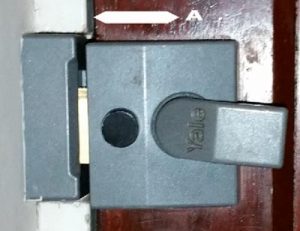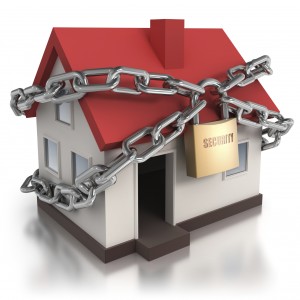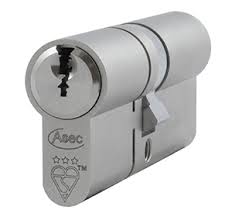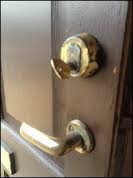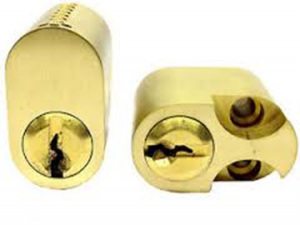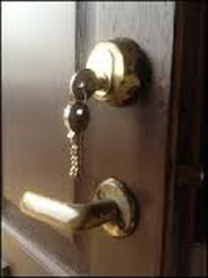When is a Smart Lock not so smart?
The answer to the above question, is ALL TOO OFTEN!
I have just done an online check of UK available smart locks on Google and I don’t like what I see. If you have a standard wooden door, getting a smart lock to replace your existing lock might look flashy, but you could well be invalidating your insurance because you are reducing your security levels.
Most of the wooden door smart locks are based around a latched lock. In the industry, we call them Nightlatches, but you might be more familiar with calling them Yale type locks. There are very few insurance standard nightlatches out there and part of what gives them their British Standard 3621 rating is the anti-pick and anti-drill key hole. Replacing that key hole with something else gives your insurer an excuse to not pay out in the event of a claim, even if a burglar entered via another route. If you are fitting a smart lock to a standard nighlatch, chances are, the burglar can bypass the whole thing with a method called ‘slipping’, faster than you can activate the lock via your phone app (more on that later). I did see a couple of smart locks that operated deadbolts. But the deadbolts that come as part of the kit were very small. One available on Amazon plainly states it replaces your existing deadbolt. But taking your existing deadbolt out and putting the replacement in would be like putting an apple in a hole big enough for a melon! And again, to conform to British Standard 3621, and therefore insurance, the dead bolt has minimum size requirements and should have anti-saw capabilities, a feature this lock certainly does not have. 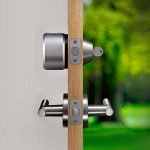
If you have any door with a multipoint locking mechanism, you are a bit luckier because the insurance industry still does not require British Standard locking barrels. Or are you? Over the last few years, burglars have increasingly attacked these door types because they are easy to get into and once you are in, the door is open for you to carry out whatever you want without leaving DNA on broken window glass. None of the new smart locks make this any harder. And you can’t use them very well in conjunction with Kite marked locking cylinders. One of the big things that deter burglars is an obviously strong cylinder. Smart locks cover up the cylinders so the burglar who cannot tell your house is well protected, is just likely to have a go anyway, destroying your expensive smart lock in the process. 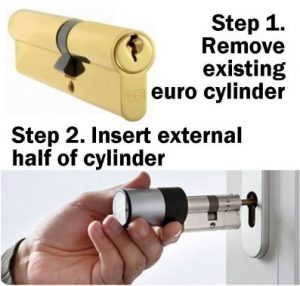
A better investment would Kite marked cylinders and a smart doorbell that records people approaching the door. 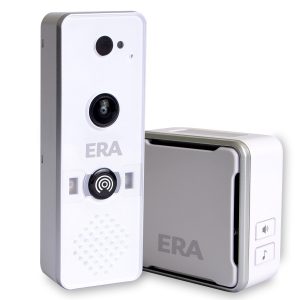
But a smart lock is more convenient and saves the hassle of keys, I hear you argue. Let’s face it, we all want to be able to open the door without having to put our bags down while getting soaked in the rain and a smart lock allows us to do that. Or does it?
Without a smart lock, you approach your door, retrieving your keys from your pocket/bag put the key in the door and you are in. Maybe you do have to put some bags down first. With almost all smart locks, you have to take out your phone, wave it front of your face so it recognises you (put in a code if it doesn’t recognise you or your fingerprint), open the smart lock app, find the unlock feature, and activate it. You might need two hands where the key only required one. All in all, it might take longer to use the smart lock rather than lock and key. Your alternative is the code version entry. These not-quite-smart locks still enable you to go key free, but what if the batteries go or the electronics fail. You are still better off with the key. Besides, knowing your eldest childs’ birthday will probably let me into your home anyway. People are too obvious with key codes.
So, you really want smart technology. What do I actually recommend? Well, I’m not changing my mind anytime soon on multipoint doors. You really need a good Kite marked cylinder as a deterrent to keep you safe. And the best ones are only available through locksmiths to my knowledge. Even smart products still require you to lift the handle before locking and you still have to use the handle to open the door. Coupled with a smart doorbell, this is your best option by far. Smart doorbells are a great Xmas prezzie idea for your older generation relatives if they are able to use smart phones. It lets them see who is at the door without having to get up. I know there are plenty of people with mobility issues who could benefit from this technology. 
If you have a wooden door, it gets even better. A new smart lock is due out in September. It is a Nightlatch, but it carries the all important BSI 3621 kite mark, making it acceptable to insurers. It will link in to Alexa and other smart devices. While it will require you to have an app, the app will run in the background on your phone, so you won’t need to take your phone out and turn it on. As long as the phone is on you, you will be able to open the door. All you do is approach your door and place your finger on the sensor. A truly secure, smart, lock.
If you require any more information regarding the above, please do not hesitate to get in touch via any of the methods on my contacts page.
Thanks for reading.
admin May 31, 2019


